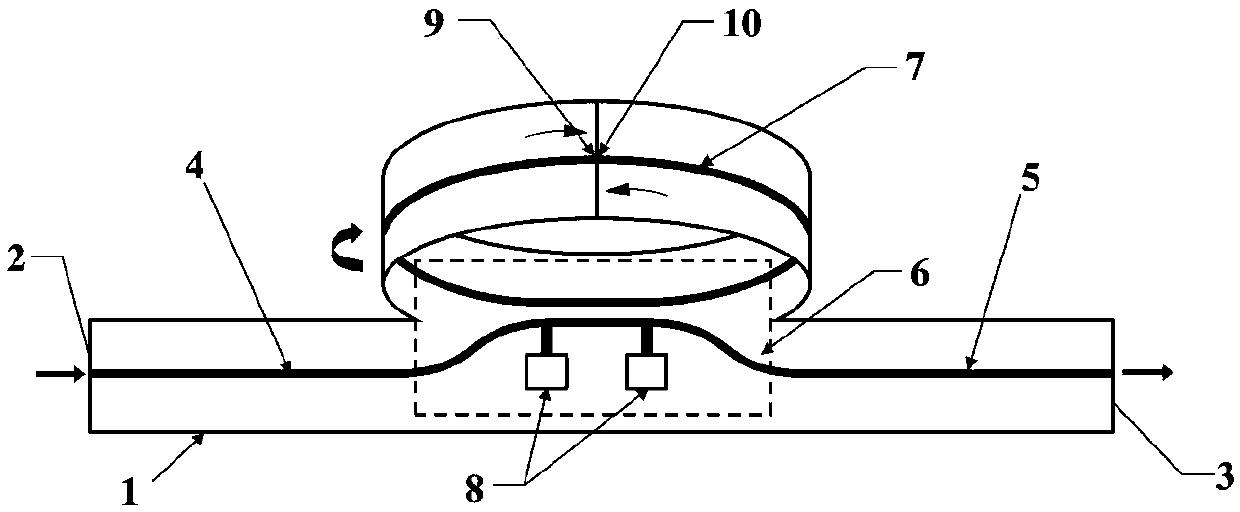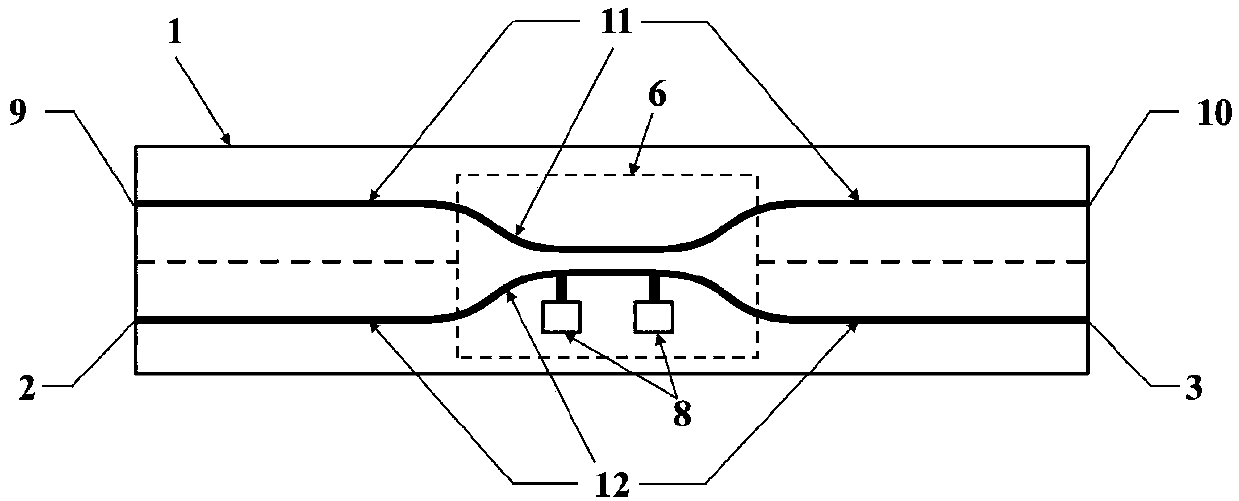Adjustable resonant cavity based on flexible surface plasmon coupler, and preparation method thereof
A surface plasmon and plasmon technology, applied in the field of integrated optics, can solve problems such as large bending loss, resonant cavity loss, and unadjustable coupling coefficient, so as to improve Q value, reduce optical radiation loss, and reduce bending The effect of loss
- Summary
- Abstract
- Description
- Claims
- Application Information
AI Technical Summary
Problems solved by technology
Method used
Image
Examples
Embodiment
[0043] A tunable flexible surface plasmon coupler is prepared by using a flexible organic polymer material, in which the thickness of the core layer is 15nm, the width of the core layer is 6μm, and the thickness of the upper and lower cladding layers is 20μm; it is sheared and separated to obtain a flexible surface plasmon coupler. The element directional coupler, the first flexible plasmonic waveguide and the second flexible plasmonic waveguide; then the left and right ends of the upper flexible waveguide are polished and crimped to form a three-dimensional three-dimensional flexible surface plasmon waveguide. It is better to adjust the coupling coefficient to obtain the adjustable ring resonator based on the flexible surface plasmon coupler of the present invention, and its bending loss is as follows Figure 4 .
PUM
| Property | Measurement | Unit |
|---|---|---|
| Thickness | aaaaa | aaaaa |
| Thickness | aaaaa | aaaaa |
Abstract
Description
Claims
Application Information
 Login to View More
Login to View More - R&D
- Intellectual Property
- Life Sciences
- Materials
- Tech Scout
- Unparalleled Data Quality
- Higher Quality Content
- 60% Fewer Hallucinations
Browse by: Latest US Patents, China's latest patents, Technical Efficacy Thesaurus, Application Domain, Technology Topic, Popular Technical Reports.
© 2025 PatSnap. All rights reserved.Legal|Privacy policy|Modern Slavery Act Transparency Statement|Sitemap|About US| Contact US: help@patsnap.com



